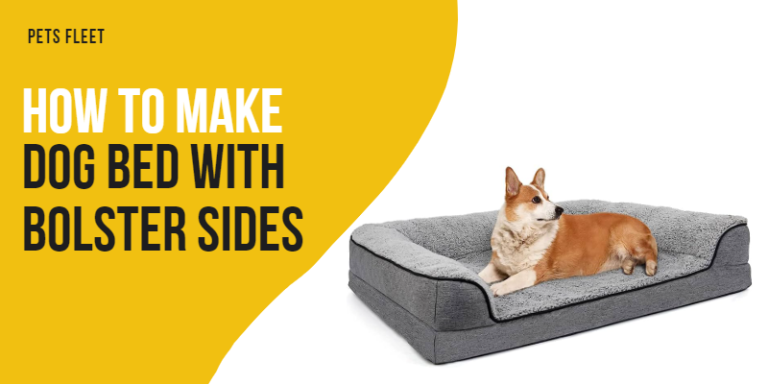How To Train Your Dog With An E Collar – 7 Step Guide

Hey there, fellow dog enthusiasts! If you’re ready to explore a training technique that’s all about bridging that communication gap with your furry buddy, you’re in for a treat. We’re diving into how to train your dog with an e- collar.
Training your dog with an e-collar involves using remote cues, like vibrations or mild sensations, to reinforce commands. Start with proper fit, low settings, positive rewards, and consistent training techniques for effective communication and learning.
I will walk you through the step-by-step process of using an e collar to train your dog effectively and safely. So grab that cup of coffee (or tea) and let’s dive into the world of e collars and dog training!
How To Train Your Dog With An E Collar – Step By Step Guide
Training your dog with an e collar can be a highly effective method, but it’s important to approach it with patience and care. Here is a step-by-step guide to help you navigate the process.
1. Introduce The E Collar Gradually
Start by allowing your dog to become familiar with the e collar before using any stimulation. Let them sniff and investigate it while associating it with positive experiences like treats or playtime.
2. Proper Fit Is Crucial
Ensure that the e collar fits snugly around your dog’s neck without causing discomfort or restricting their movement. It should sit high on their neck, just below their ears.
3. Begin Training In A Distraction-Free Environment
Start in a quiet space where your dog can focus solely on you and the commands you give them. This will help them understand what is expected of them when wearing the e collar.
4. Use Consistent Commands
Before introducing the e collar stimulation, establish clear verbal cues for desired behaviors such as “sit,” “stay,” or “come.” Your dog needs to understand these commands before associating them with the use of an e collar.
5. Gradually Introduce Low-Level Stimulation
Once your dog understands basic commands, begin incorporating low-level stimulations from the e collar when giving these cues. The purpose is not to cause pain but rather provide a mild sensation that captures their attention.
6. Provide Rewards For Correct Responses
Each time your dog responds correctly to a command given alongside an appropriate level of stimulation, reward them immediately with praise, treats, or playtime activities they enjoy.
7. Be Patient And Consistent Throughout Training Sessions
Training takes time; do not rush progress or expect instant results from using an E-collar methodically following each step will improve communication between you and your furry friend.
Remember that proper use of an E-collar involves understanding its function as well as utilizing positive reinforcement techniques alongside this tool.
By following this step-by-step guide and being considerate of your dog’s well-being, you can effectively train
How Does An E Collar Work?
E Collar is a snazzy gadget (short for electronic collar) for training dogs. There’s a part that goes on your dog’s neck and a remote for you to control.
- How It Works: When you press a button on the remote, the collar sends signals to your dog. These signals can be like tingles or even static shocks, but not too strong. You can adjust how strong they are.
- The Idea: It’s all about clear communication between you and your furball. Not to hurt them, but to guide them. Think of it like saying, “Hey, buddy, let’s work on that!”
- Training Key: Using the e collar isn’t a solo act. You team it up with positive training methods. So, it’s not just about correcting – it’s about showing them the right way to do things.
- Remember: E collars need a responsible hand and proper training. They’re not about causing harm but guiding your pup. Positive vibes and proper use are the name of the game.
E collars are like your training sidekick. They help you talk to your dog from a distance. Use them right, and it’s a win-win for both of you!
Pros And Cons Of Using An E Collar To Train Your Dog
| Pros of Using an E Collar for Dog Training | Cons of Using an E Collar for Dog Training |
| Clear Communication: E collars help you guide your dog from a distance. | Misuse Risk: If not used correctly, it can confuse or stress your pup. |
| Effective Training: They can speed up learning basic commands. | Potential Discomfort: Some dogs might find the sensations uncomfortable. |
| Quick Corrections: Useful for urgent commands like “come” in dangerous situations. | Sound Sensitivity: Beep or vibration might scare noise-sensitive dogs. |
| Consistency: Offers consistent cues to your dog, reducing confusion. | Dependence Concerns: Overuse might lead to your dog relying on the collar cues. |
| Precision: Allows for fine-tuning training, especially in distracting environments. | Training Effort: Requires proper training to avoid negative effects. |
| Bond Strengthening: When used responsibly, e collars can deepen your bond. | Time Commitment: Proper usage takes time to learn and implement. |
Considering all aspects before making a decision on whether or not to use an e-collar is crucial.
The key lies in responsible usage – ensuring that they are used correctly under proper supervision by knowledgeable trainers who prioritize their dogs’ well-being.
Types Of E Collars
When it comes to choosing an e collar for training your dog, there are several types available in the market.
1. Static E Collars: These are the most common type of e collars and work by delivering a small static shock to your dog when they exhibit unwanted behavior. The intensity level can usually be adjusted based on your dog’s sensitivity.
2. Vibration E Collars: As the name suggests, these collars use vibrations instead of shocks to get your dog’s attention. They are a milder alternative to static e collars and can be effective for dogs who are more sensitive or easily startled.
3. Spray E Collars: These collars release a burst of citronella spray when triggered by a remote or automatic device. The scent is unpleasant to dogs but harmless, serving as a deterrent for undesirable behavior.
4. Tone E Collars: Also known as beep or sound collars, these devices emit a high-pitched tone that acts as a warning signal for your dog. This can be useful in situations where you want to redirect your dog’s attention without using any physical stimulation.
5. GPS Tracking E Collar: This advanced type of e collar combines electronic training capabilities with GPS tracking technology, allowing you to monitor and control your dog’s behavior remotely while keeping track of their location.
Remember that not all types of e collars may be suitable for every dog or training situation. It is essential to consult with professional trainers or veterinarians before selecting the right one for your furry friend.
Things To Be Aware Of When Training Your Dog With An E Collar
When using an e collar to train your dog, there are several important things to keep in mind.
- No Harm Zone: E collars are for communication, not punishment. Never use them to hurt your buddy.
- Snug & Comfy: Fit the collar right, so it’s comfy and snug, without causing any ouchies.
- Start Softly: Begin with low vibes and slowly turn up if needed. No need to overwhelm your doggo.
- Body Talk: Watch your pup’s moves and adjust as needed. Their signals guide the training journey.
- Team Effort: Everyone in the dog’s circle should be on the same page. Consistency is key.
- Good Vibes: Positive stuff makes all the difference. Line E-collar cues to treats and cheers.
- Learning Curve: You’re both learning together. Be patient and celebrate small wins.
- Strong Bond: Correct use enhances your bond – it’s a team effort for success.
Remember, with the right approach and care, e-collar training can be a positive tool that helps you and your furball understand each other better. High paws to that!
Conclusion
Training your dog with an e collar can be a highly effective method when done correctly. It allows you to communicate with your furry friend from a distance, reinforcing positive behaviors and discouraging negative ones.
However, it’s important to approach e collar training with caution and ensure that you understand how to use it properly. Using an e collar can be a valuable tool in training your dog when used responsibly and ethically.
FAQs
Can I train my dog myself with an e-collar?
Absolutely, you can train your dog with an e-collar yourself, but proper knowledge, guidance, and a responsible approach are essential for effective and safe training.
Is an e-collar a good way to train a dog?
Using an e-collar for dog training can be effective when used responsibly alongside positive reinforcement, but it’s essential to understand and follow proper techniques for the best results.
How do I train my dog to stay with an e-collar?
Train your dog to stay with an e-collar by using a gentle stimulation cue when they move, rewarding them when they stay put, gradually increasing duration, and pairing it with positive reinforcement.
How do you introduce an e-collar to a dog?
Introduce an e-collar by letting your dog sniff and explore it before wearing, associating it with positive experiences like treats, and starting with low, non-threatening settings during training sessions.






